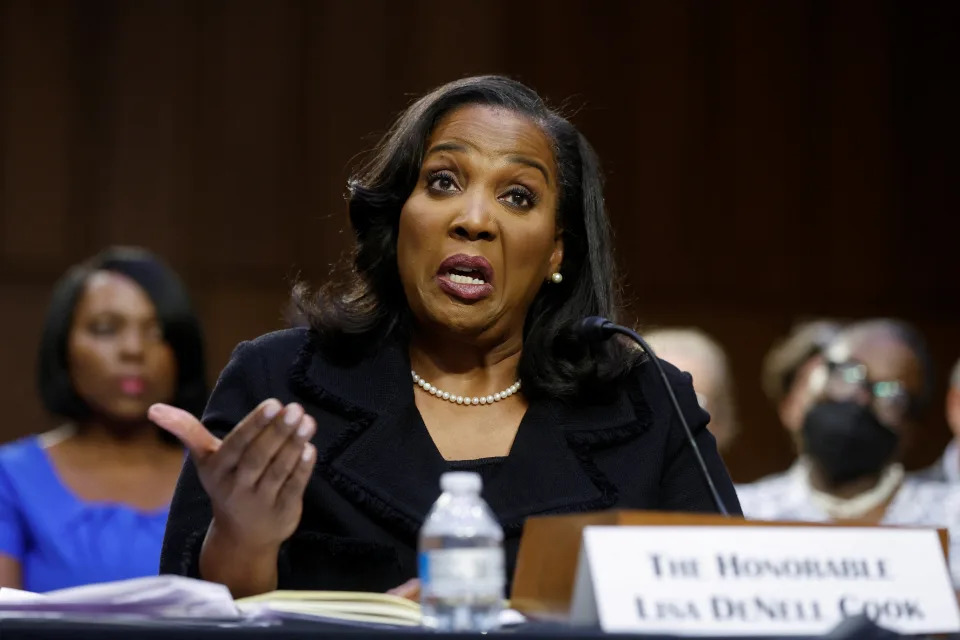As the Federal Reserve continues to navigate the complexities of monetary policy, Governor Lisa Cook has weighed in on the future of interest rate cuts. In a recent speech, she expressed her support for a more gradual approach to lowering rates, citing resilience in the job market and stickier-than-expected inflation.
Resilience in the Job Market
Cook’s comments come amidst a backdrop of a strong labor market, with the unemployment rate standing at 4.2% as of November. While economists expect to see a gradual cooling in jobs, with 153,000 jobs added in December compared with 227,000 in November, Cook believes that the job market is resilient enough to withstand further interest rate cuts.
"We can afford to proceed more cautiously with further cuts," Cook said in her speech in Ann Arbor, Mich. "The Fed rate cuts made since September have notably reduced the restrictiveness of monetary policy."
Sticky Inflation
In addition to the strong job market, inflation has also been a concern for the Federal Reserve. Despite a peak of 7.2% in June 2022, the Personal Consumption Expenditures (PCE) price index eased to 2.4% in November. While this is still above the Fed’s 2% goal, Cook believes that the latest inflation data is consistent with a trend of returning to 2% inflation over time.
"I think we can afford to proceed more cautiously with further cuts," Cook said. "The process of bringing inflation back down to the Fed’s 2% goal could still be a bumpy one."
Cautious Approach Ahead
Cook’s comments are part of a growing chorus of cautious commentary from Federal Reserve officials in the new year. Governor Adriana Kugler and San Francisco Fed president Mary Daly have also expressed their concerns about bringing inflation down while maintaining a solid job market.
"We are fully aware that we are not there yet — no one is popping champagne anywhere," Kugler said at the annual American Economic Association conference in San Francisco. "And at the same time … we want the unemployment rate to stay where it is" and not rise aggressively.
Policy Uncertainty Ahead
As the Federal Reserve navigates its next steps, policy uncertainty will likely play a significant role. The new Trump administration has promised to push tariffs and tax cuts, which could create challenges for Fed officials.
Cook acknowledged this uncertainty in her speech, saying that she always envisioned moving more quickly in the early stages of the Fed’s rate easing campaign and then cutting more gradually as the policy rate came closer to neutral — the rate that neither boosts nor slows economic growth.
"Over time, I still think it will likely be appropriate to move the policy rate toward a more neutral stance," Cook said.
What Does This Mean for Interest Rates?
So what does this mean for interest rates going forward? While Cook’s comments suggest that further interest rate cuts may be more gradual than previously anticipated, it is unlikely that the Federal Reserve will abandon its commitment to lowering rates altogether.
As the labor market remains strong and inflation continues to ease, the Federal Reserve will likely continue to monitor economic conditions closely before making any further moves. However, with policy uncertainty on the horizon, it is possible that interest rate cuts may be put on hold or slowed in response to changing circumstances.
Conclusion
In conclusion, Governor Lisa Cook’s comments provide valuable insight into the Federal Reserve’s approach to monetary policy. While a more gradual approach to lowering interest rates may seem cautious, it reflects the complexities of navigating a strong job market and sticky inflation.
As the Federal Reserve continues to navigate these challenges, one thing is clear: economic conditions are constantly evolving, and policymakers must be prepared to adapt their strategies accordingly.
Frequently Asked Questions
- Q: What does Governor Cook’s speech mean for interest rates?
A: Cook’s comments suggest that further interest rate cuts may be more gradual than previously anticipated. - Q: Why is the Federal Reserve cautious on interest rate cuts?
A: The strong job market and sticky inflation have created challenges for Fed officials, who must balance the need to bring down inflation with the risk of weakening the labor market. - Q: What are the implications of a new Trump administration for monetary policy?
A: Policy uncertainty will likely play a significant role in shaping the Federal Reserve’s next steps, as the new administration promises to push tariffs and tax cuts.
Related Articles
